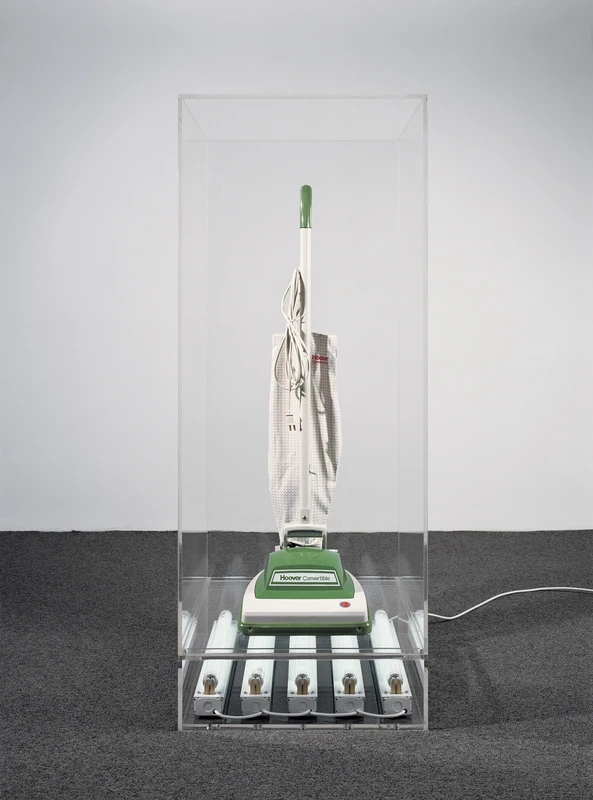Jeff Koons


b. 1954, United States
American sculptor, born 1954.
Jeff Koons exhibited a passion for art at an early age. When he was nine, his father Henry, an interior designer, placed Old Master paintings that Koons had copied in the window of his furniture store to promote his son’s artwork.
Koons went to Maryland Institute College of Art in Baltimore and through a student mobility program studied at the School of the Art Institute of Chicago under Ed Paschke, whose technicolor renderings of superheroes and other pop icons were an early source of inspiration. Koons received a BFA from Maryland Institute of College of Art in 1976.
After moving to New York City in the beginning of 1977, Koons’s first job was at the Museum of Modern Art, where he worked several years until he began working as a Wall Street commodities broker to support his studio practice. His first major works invoked commodity fetishism: titled The New, they comprised vacuum cleaners displayed on or in Plexiglas boxes over grids of fluorescent light. Exhibited for the first time in the window of the New Museum in New York in 1980, they were glossy reliquaries of American consumer culture that cemented Koons’s reputation as a rigorously conceptual artist.
In 1983, Koons began the Equilibrium series, suspending basketballs in aquarium tanks filled with water. Working with Nobel Prize-winning physicist Richard Feynman, he devised a precise mixture of water and salt that would make the balls float in the middle of the tanks, as if suspended. Koons’s interest in buoyancy was always within his inflatables, which would soon vault him to stratospheric fame: taking air-filled vinyl toys and casting them in polished stainless steel, he once again transformed a cheaply manufactured commodity into a precious object, capable of reflecting a viewer’s desiring gaze. Over time, these sculptures grew in scale, from the modestly-sized Rabbit (1986) to the monumental Balloon Dog (1994–2000). In 2007, Rabbit floated more than 50 feet over New York’s Fifth Avenue, reimagined as a gigantic helium-filled balloon in the Macy’s Thanksgiving Day Parade.
In the mid-1980s, Koons cast for the first time sculptures in stainless steel, including the Jim Beam – J.B. Turner Train that was a liquor decanter set filled with Jim Beam bourbon and Kiepenkerl, a life-sized statue of a 17th-century traveling merchant, which Koons created for the 1987 edition of Skulptur Projekte Münster. For the Banality series, Koons changed his materials. He collaborated with workshops in Germany and Italy to produce larger-than-life-sized sculptures in porcelain and wood inspired by banal and dislocated images that we are surrounded by in our lives. Several of these sculptures, polychromed in bright colors, represented American pop icons such as Buster Keaton and Michael Jackson, cradling his chimpanzee Bubbles. Rendered to scale, they are simultaneously exuberant and unsettling.
Koons’s combining of rococo fantasy and pop kitsch reached its apotheosis in Made in Heaven (1989–91), a series of sculptures and paintings. The works were sensationally controversial for their graphic content and bold transgression of social norms. After Made in Heaven, Koons made his world-renowned Puppy sculpture made out of 60,000 live flowering plants, which was a continuation on the Baroque and Rococo tradition.
Inspired by the cycles of life within a calendar year, Koons embarked on the Celebration series in 1994, his most ambitious and technologically demanding work yet. While completing the complex Celebration sculptures, Koons turned his attention to oil painting, a medium in which he has continued to work ever since. In the Easyfun and Easyfun-Ethereal series, culling images from magazines and product packaging, particularly those involving food and sex, Koons used computer software to create densely layered digital collages that he then transferred to canvas by hand in compositions. His engagement with pop culture extended to comic book characters, inflatable pool toys, and everyday life in the series Popeye (2002–13) and Hulk Elvis (2004–21).
Most recently, Koons has returned to the art of classical antiquity and the Renaissance. His Venus sculptures from the Antiquity series (2008–) in mirror-polished stainless steel, invoke the goddess of love and beauty–themes that recur throughout his work—while using mass-produced figurines as models. Koons’s Gazing Ball series (2012–21) embeds mirrored orbs into reproductions of Old Master paintings, offering viewers a chance to experience a metaphysical state within time and space contained within these great works of art and our relationship to them and the artist.
(Biography supplied by Pace Gallery)